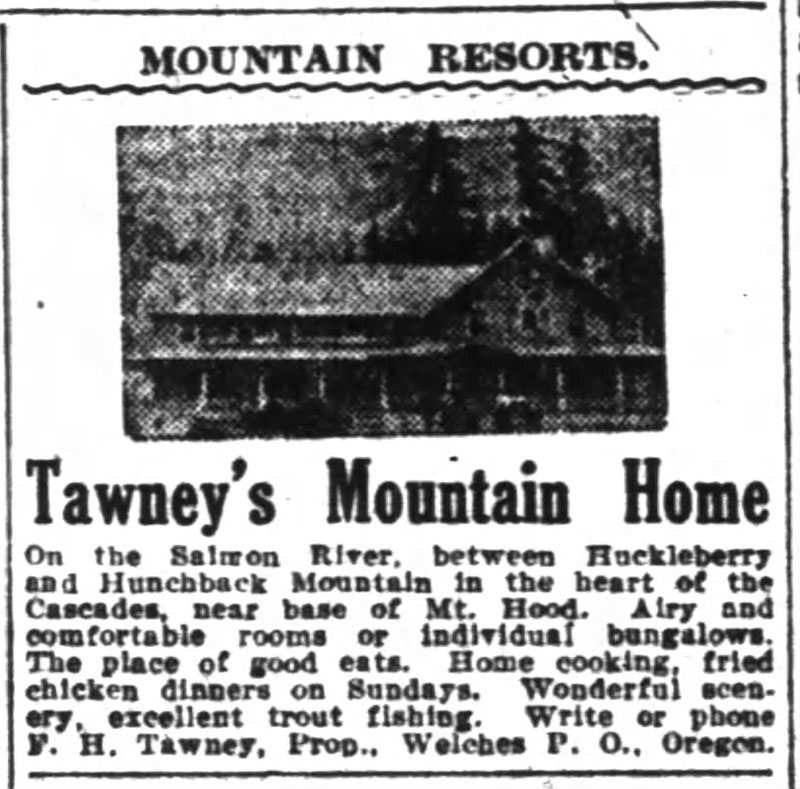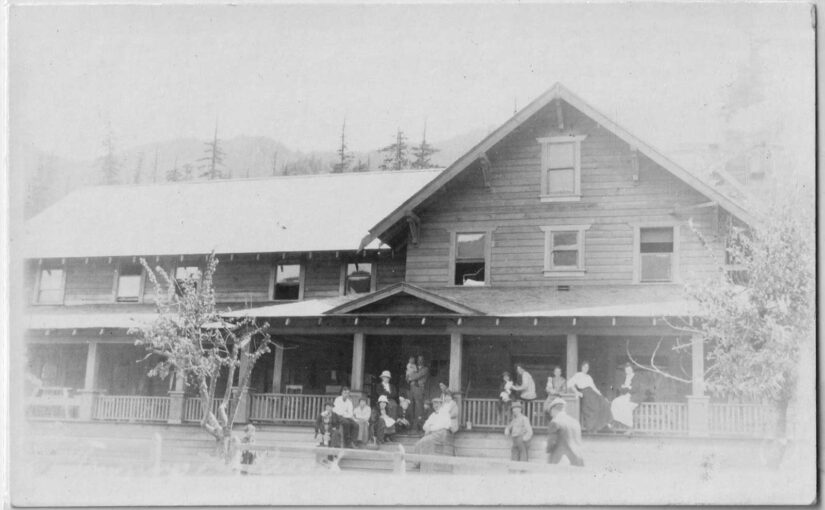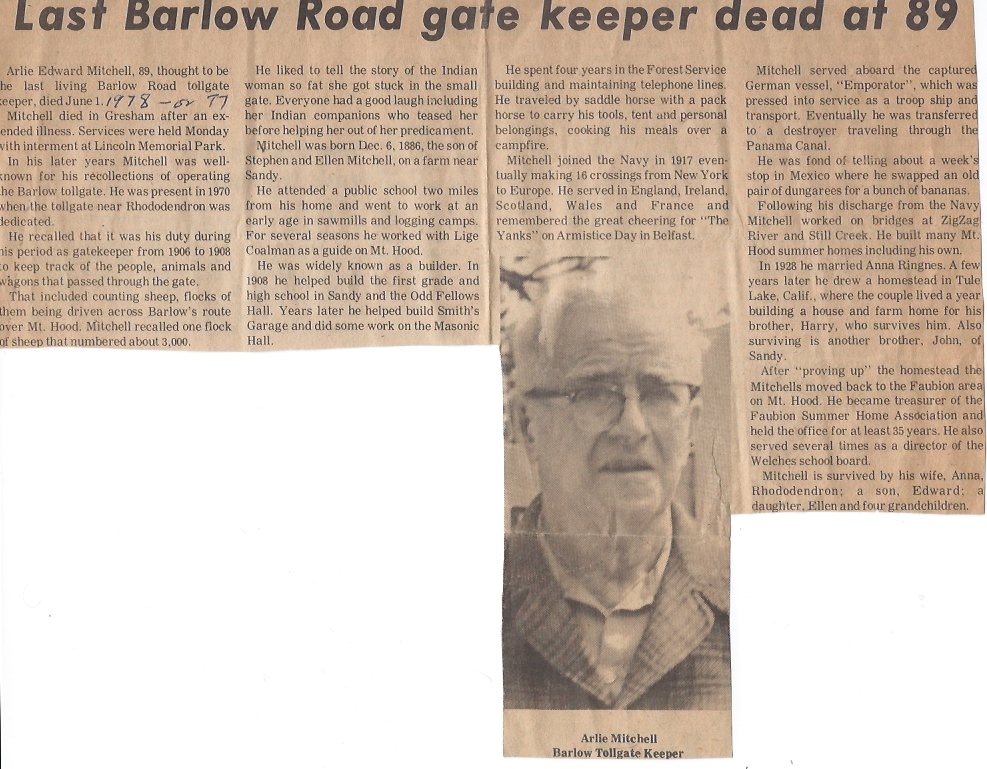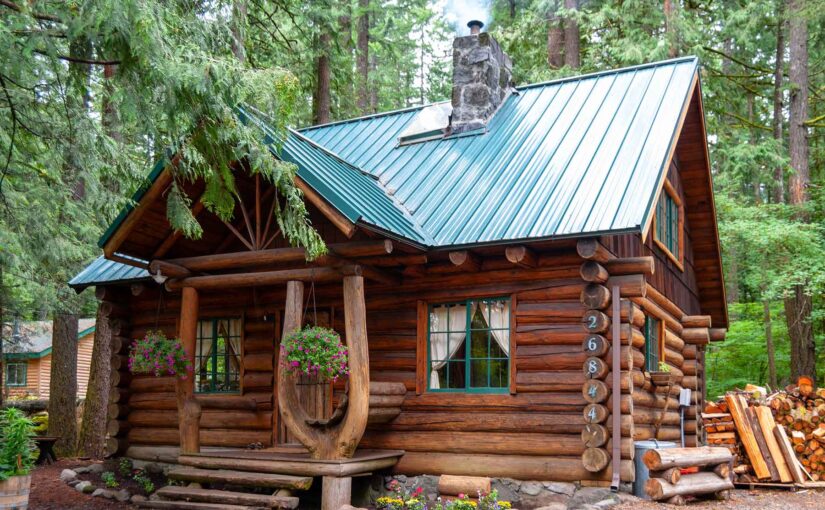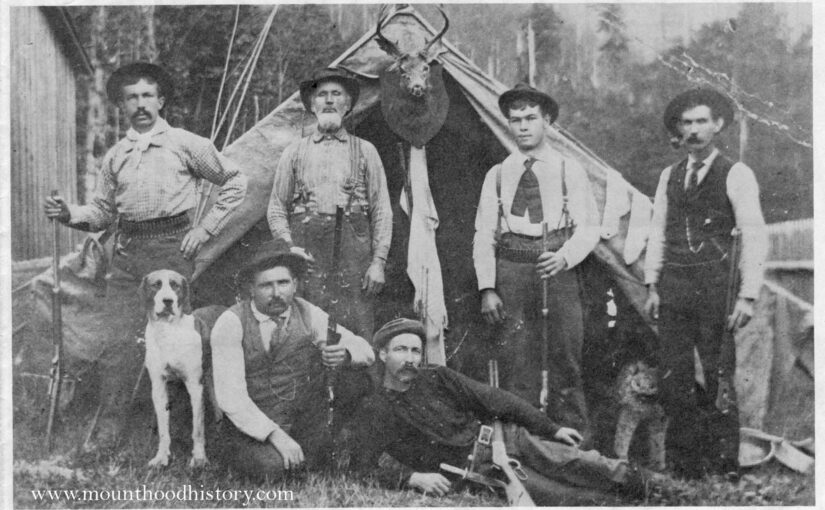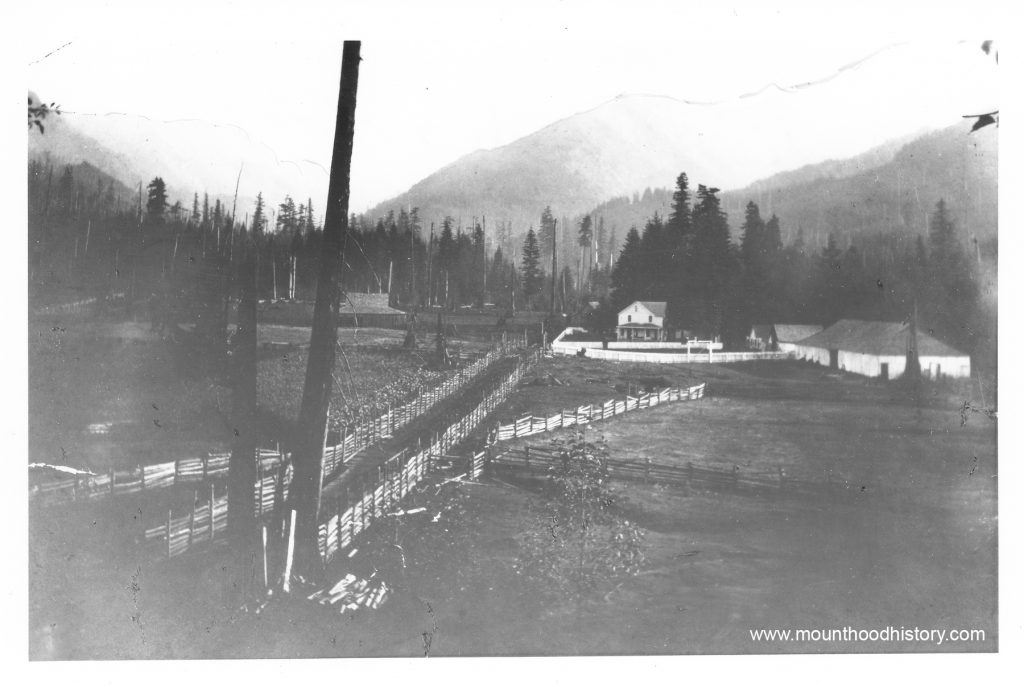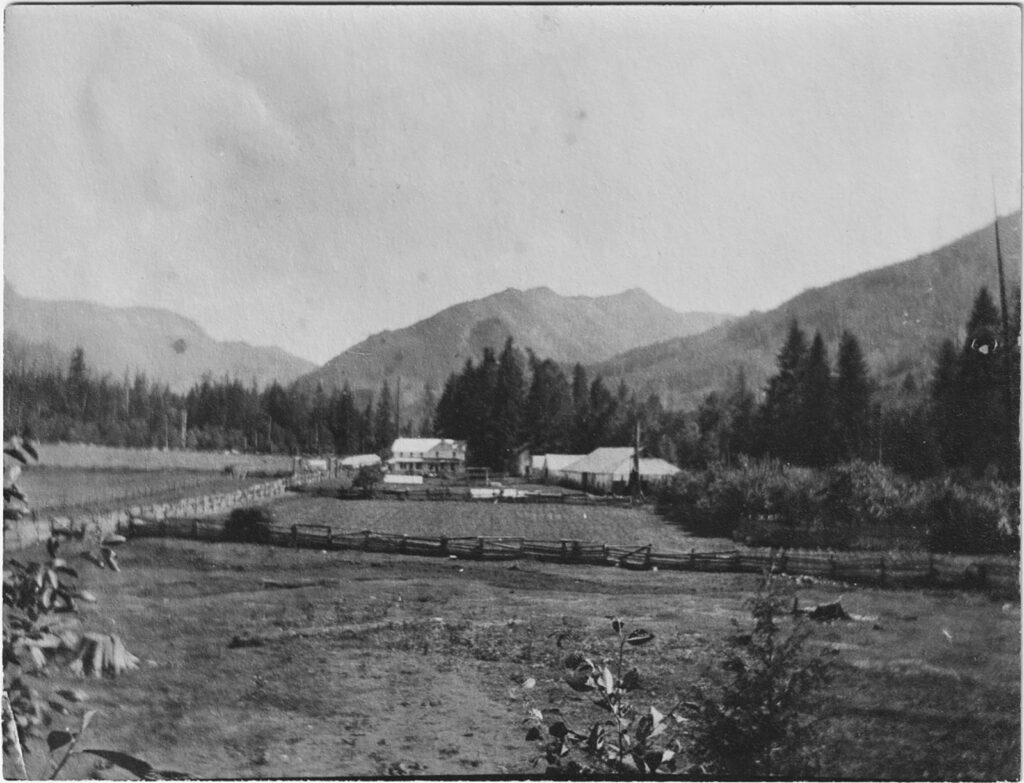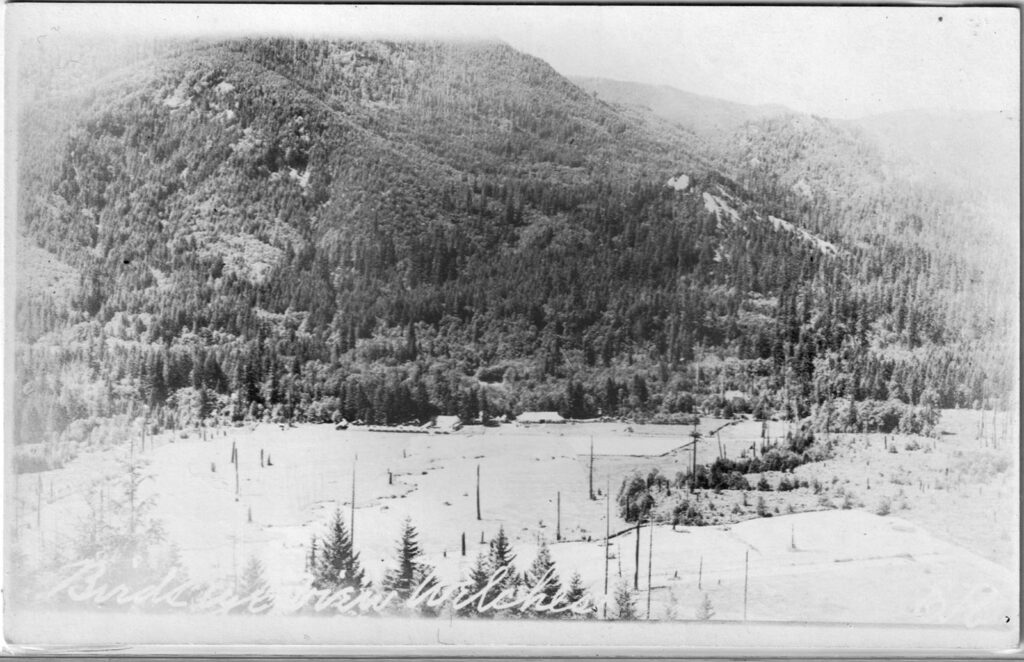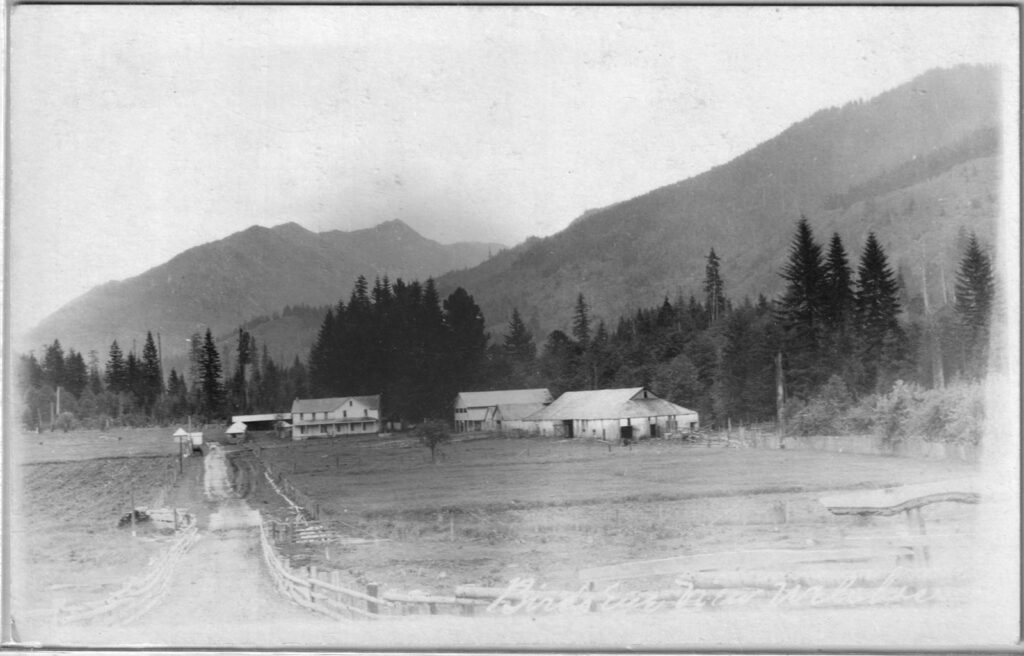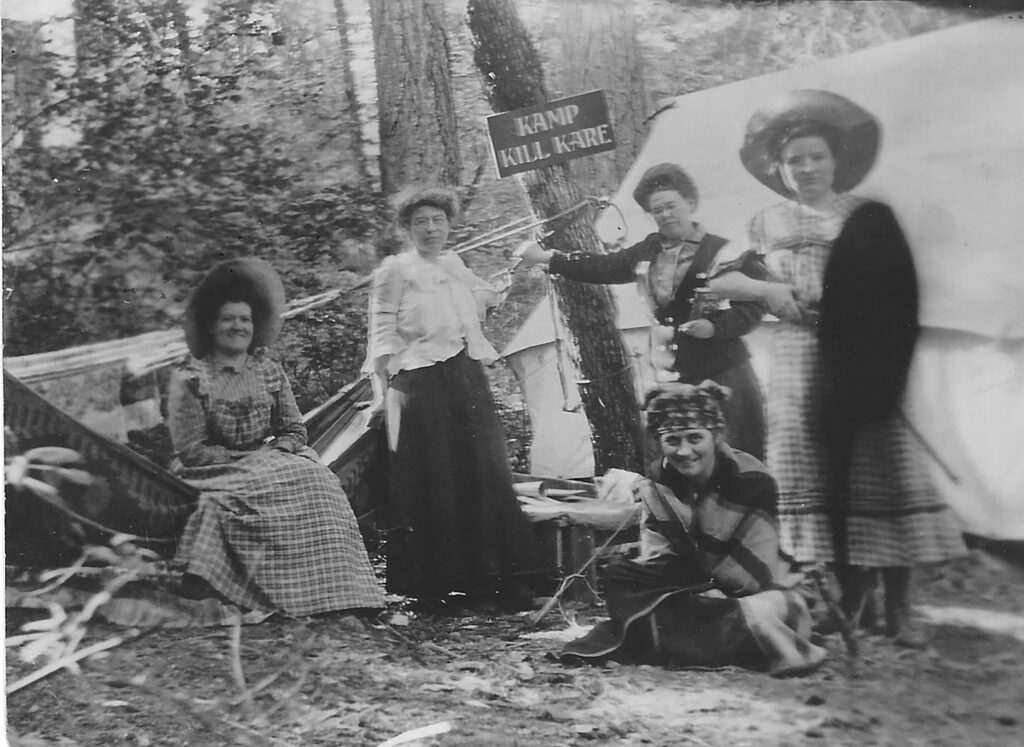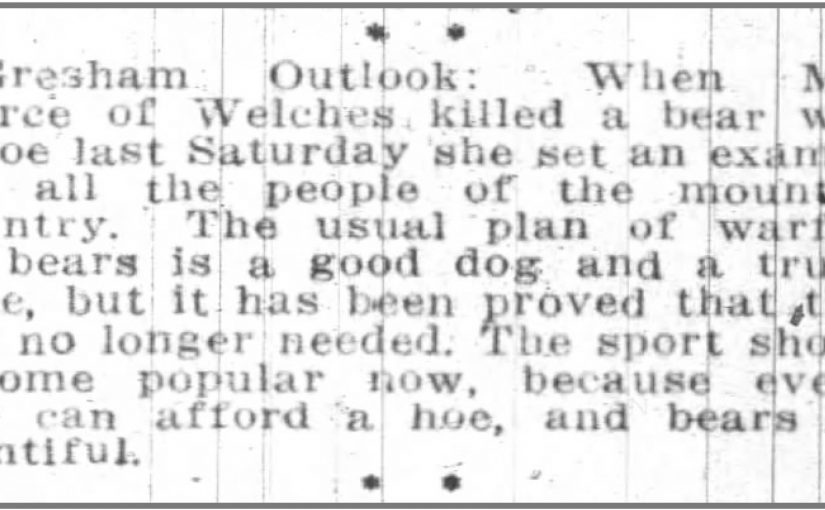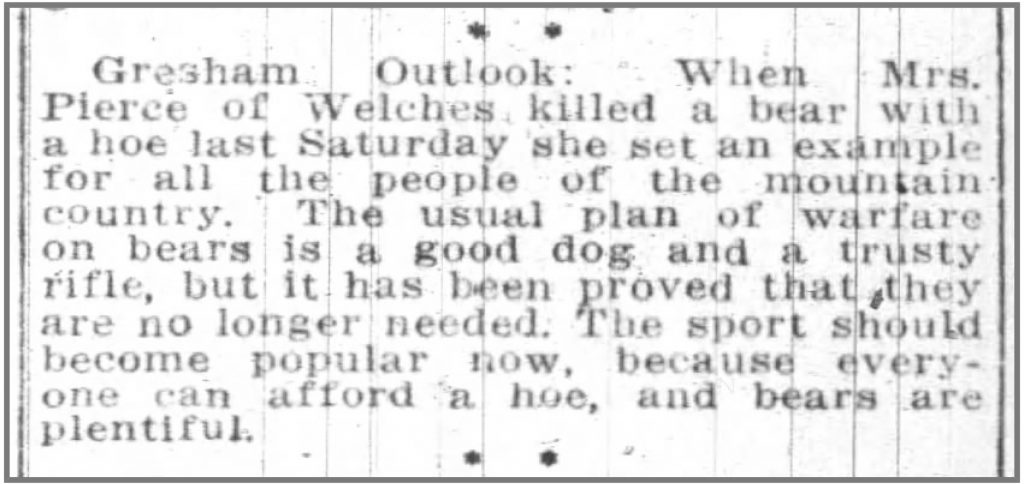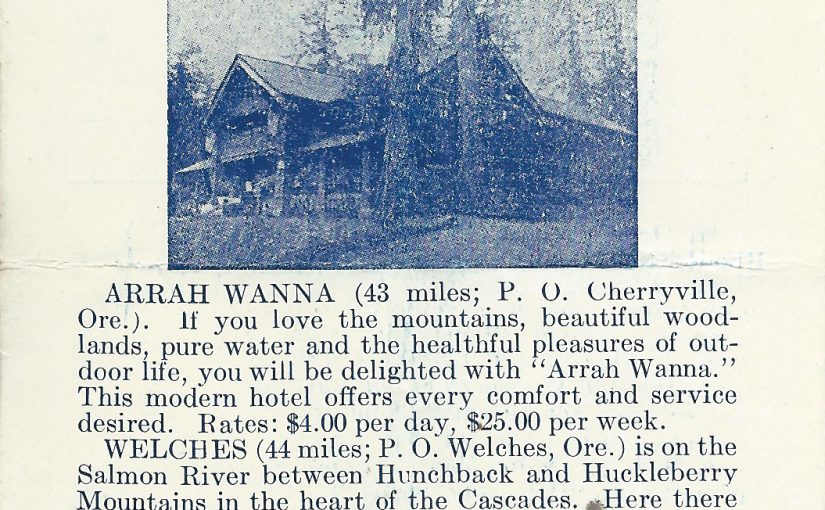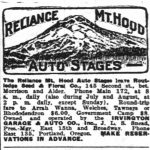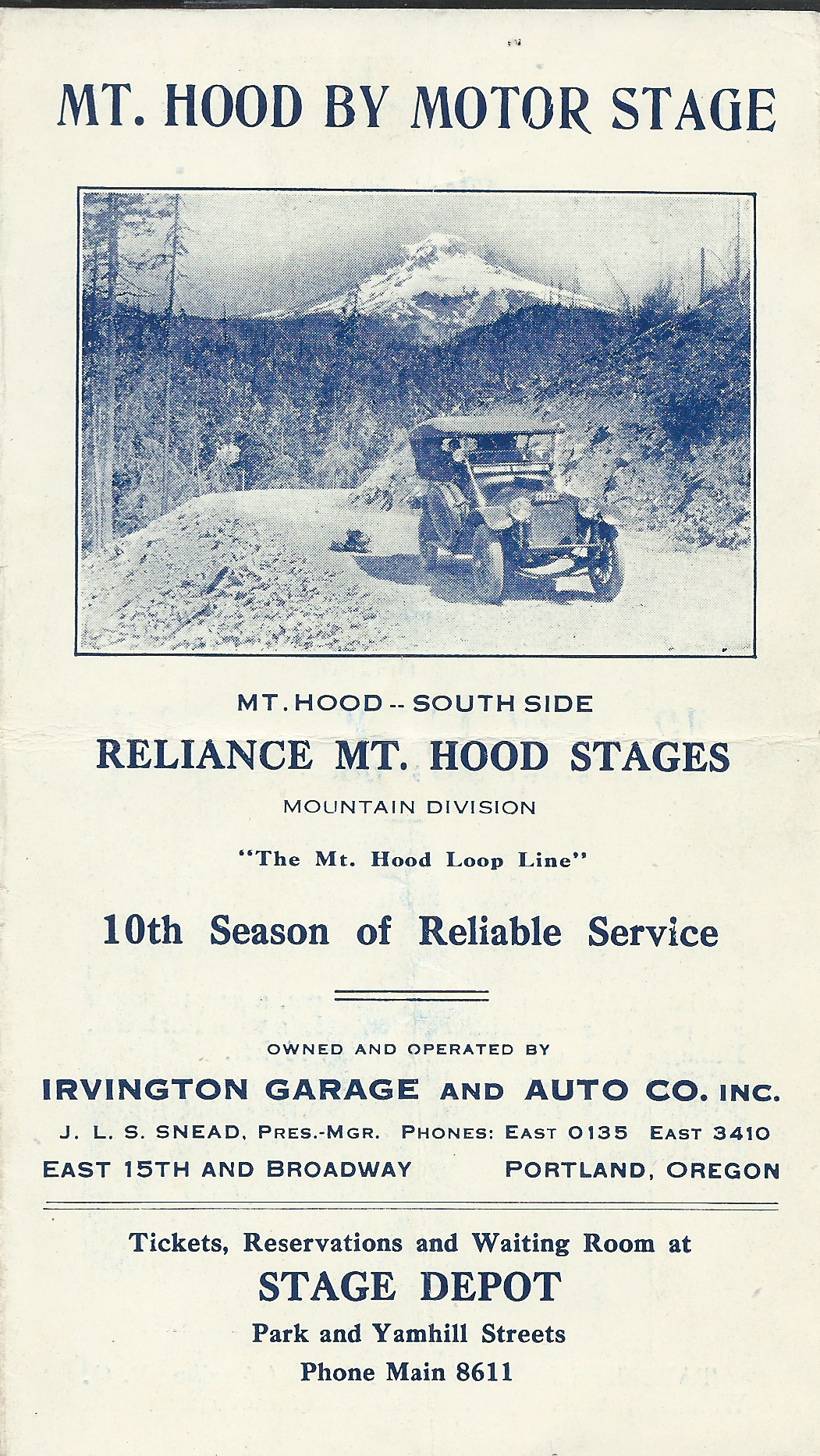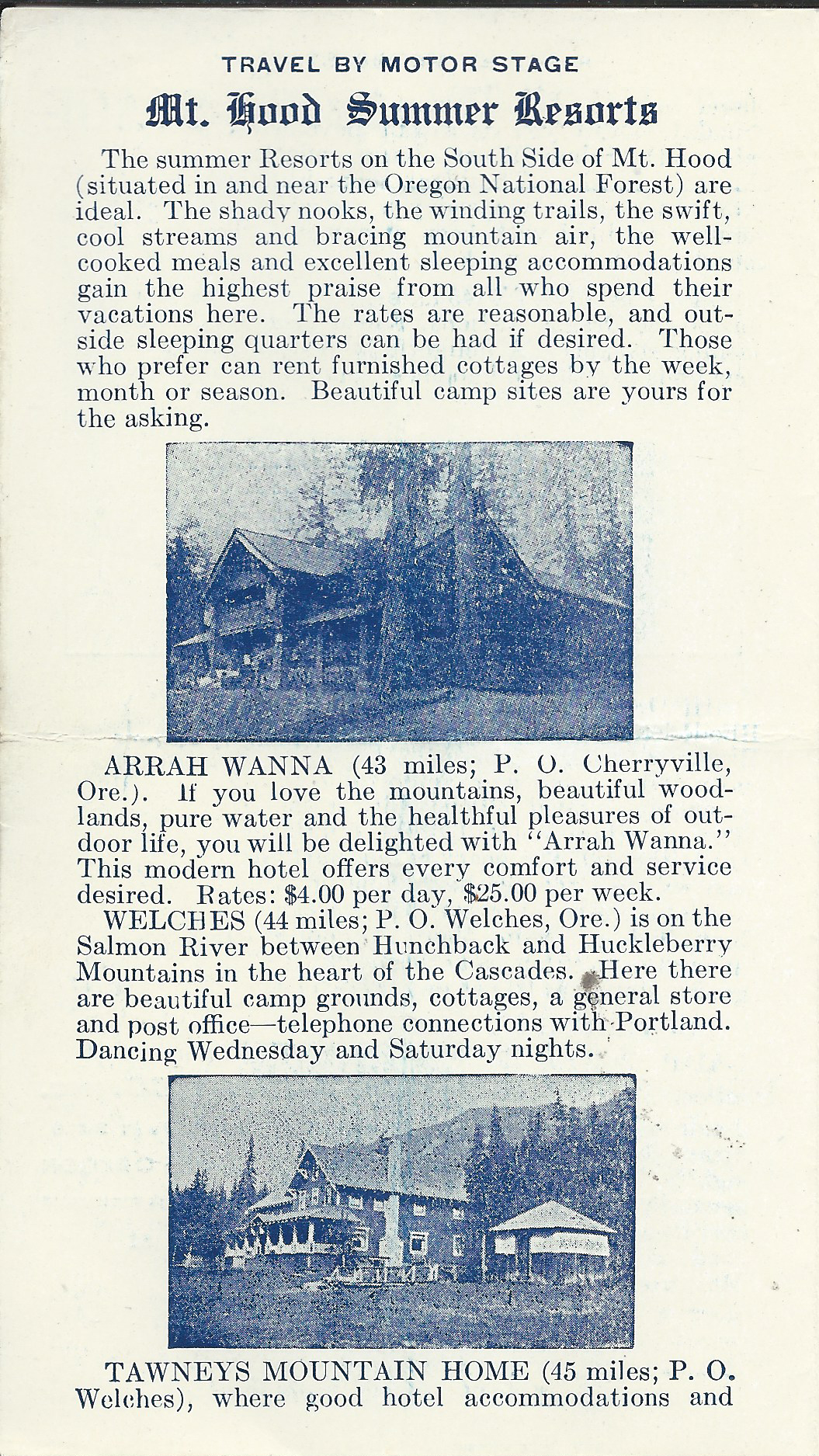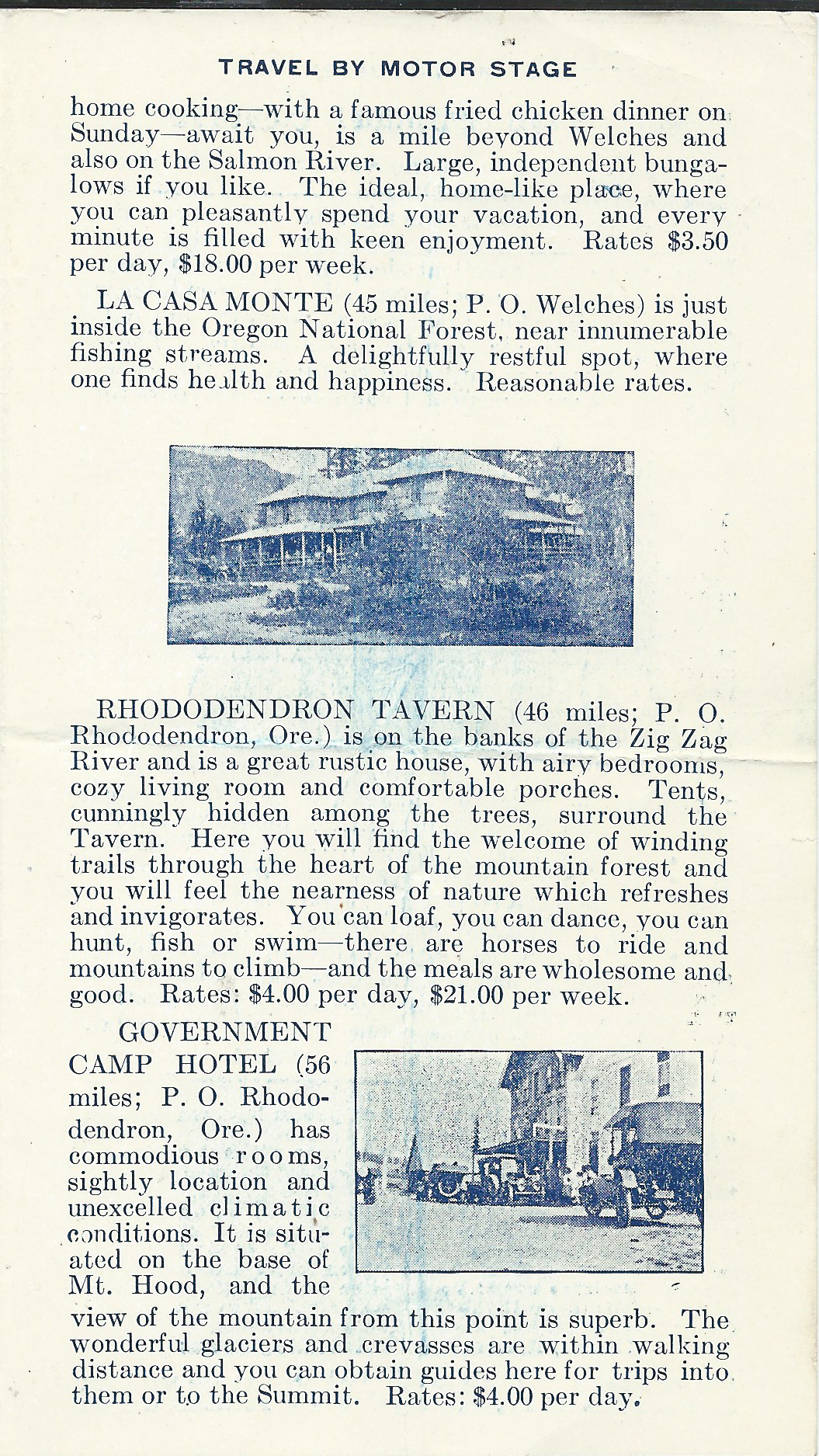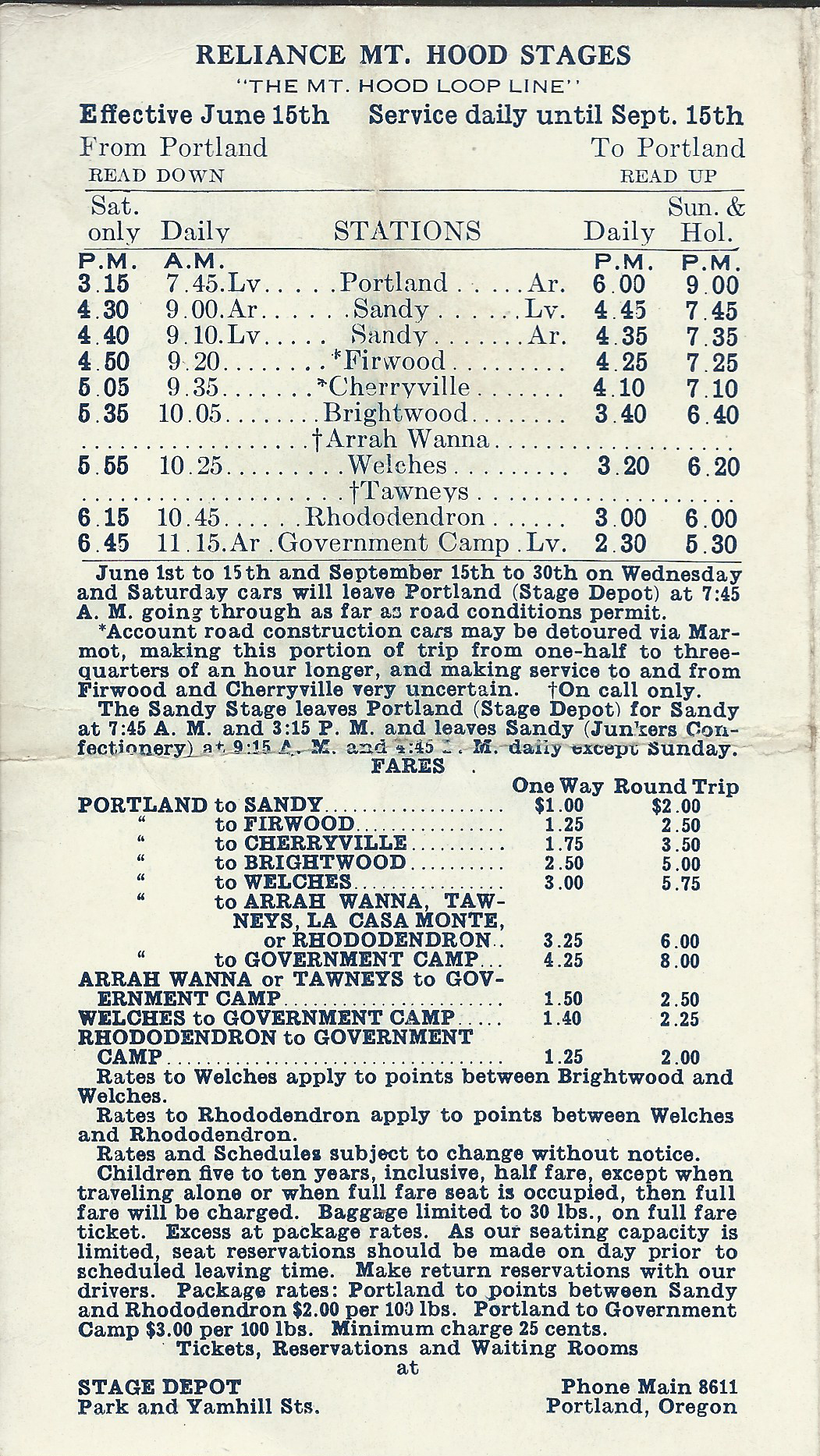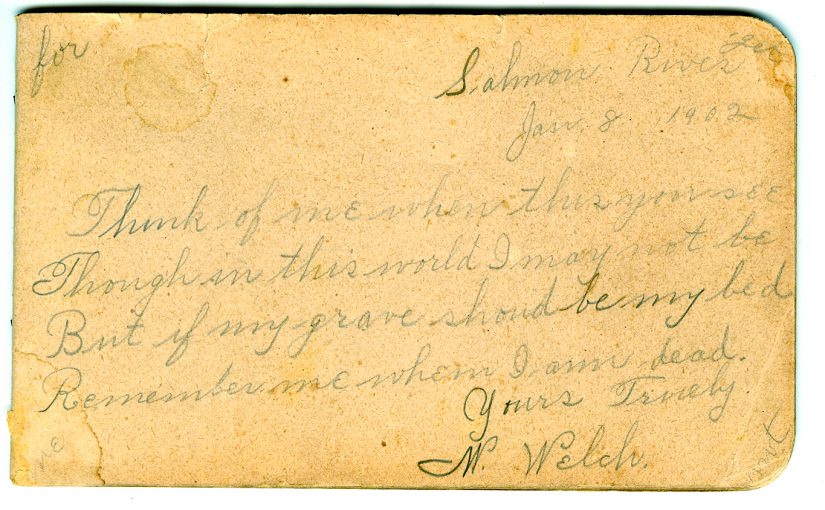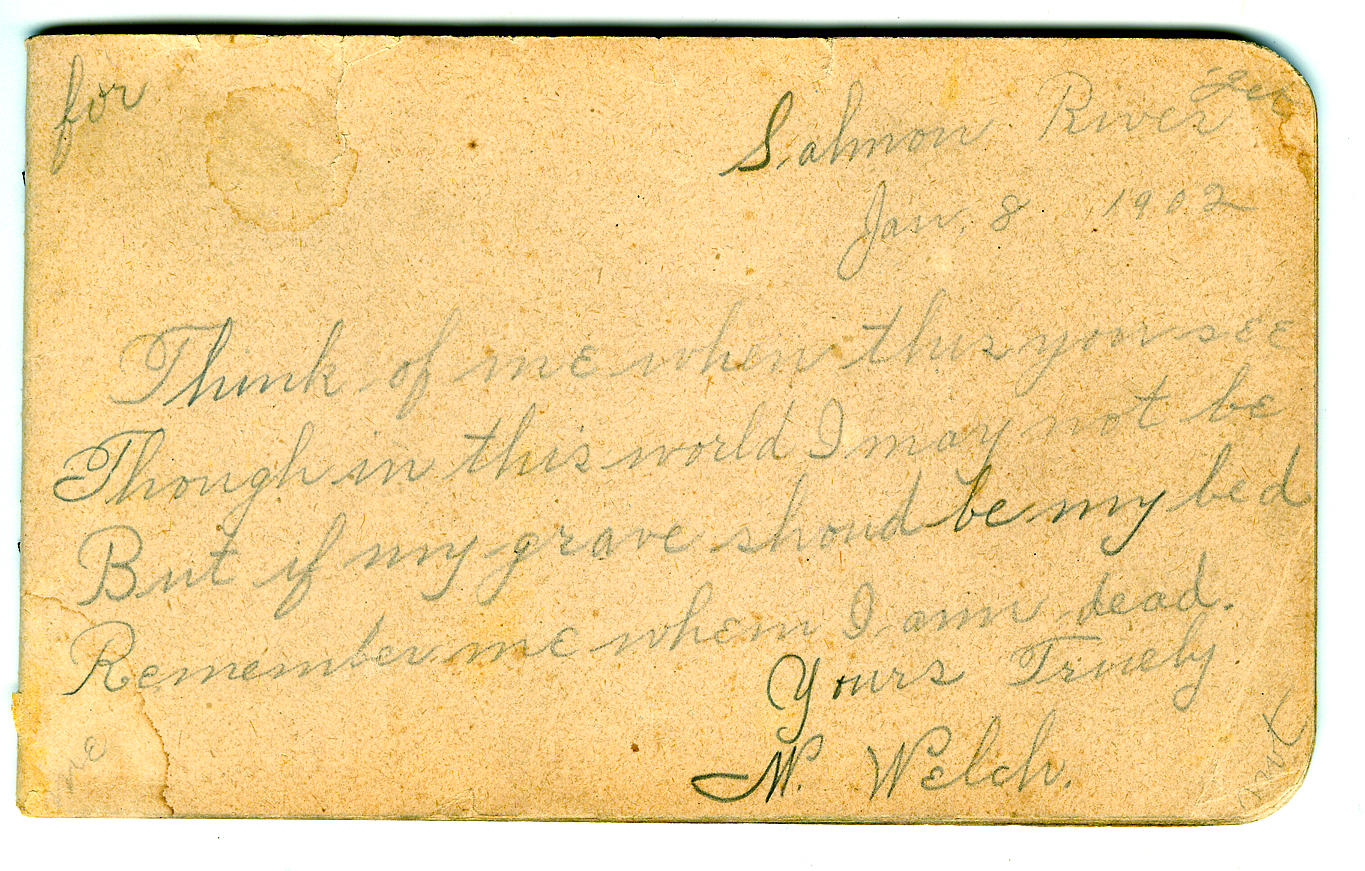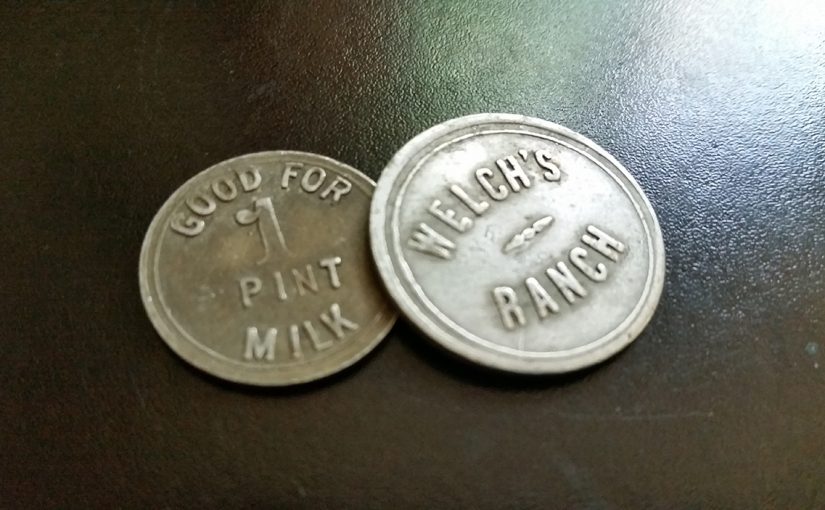In the early days the Welches Hotel wasn’t the only resort in the Salmon River Valley in the foothills of Mount Hood, Oregon. About a mile past the Welch’s place, at the end of the road, was Tawney’s Mountain Home. Situated along the Salmon River with vast stretches of wilderness surrounding it, Tawney’s Hotel was an outdoor vacation destination from 1910 to 1945.

The hotel was built on a portion of the old Walkley family homestead south of Welches. The Walkley’s didn’t operate a hotel, but they kept boarders in their home. John Maulding and his wife bought the property in 1906, which included 100 acres and the Walkley home. The home was remodeled and enlarged using the homestead house for the dining room, with an addition for lodging, turning it into what was known as the Maulding’s Hotel.
In 1909 Francis H. Tawney and his wife Henriett leased the property and in 1910 they purchased it and started improvements to the hotel. In 1913 a fire burned a large portion of the old hotel building. A new two story addition was quickly built and new hotel was ready for guests in 1914.
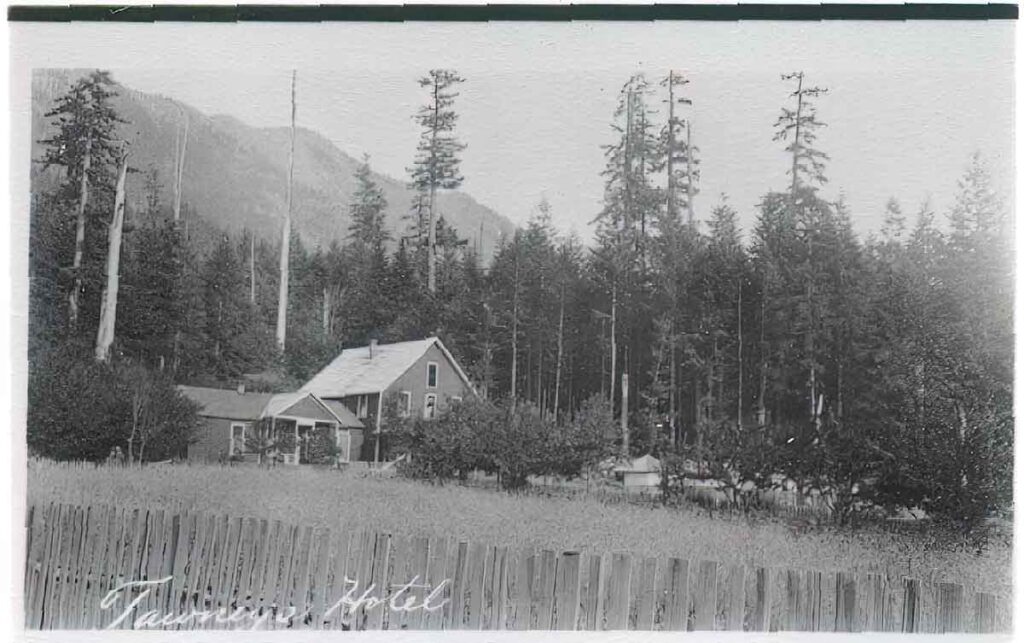
Tawney’s Hotel was a large building with 15 guest rooms. Because the hotel was so popular, they erected tent cabins on the grounds outside to accommodate more guests. As you entered the building you came into a huge living area with a large rock fireplace. There was a large staircase leading to the upper floor where the guest rooms were located. Adjoining the living room was a huge dining room with its own fireplace and a large dining table. There was only one indoor bathroom, with commode and a bathtub. It was located off the dining room. It was said that you practically needed a reservation if you wanted to use it.
Back then a week’s stay cost $10, including meals. Mrs. Tawney, with the help of Emily, the wife of their only son Clyde, cooked for the guests. She served the meals Family Style with full platters of chicken, roast beef, and steak. She always had jams, fresh bread, pies, and canned foods available. She made large sugar cookies for the children, but it was common for the adults to raid the cookie jar.
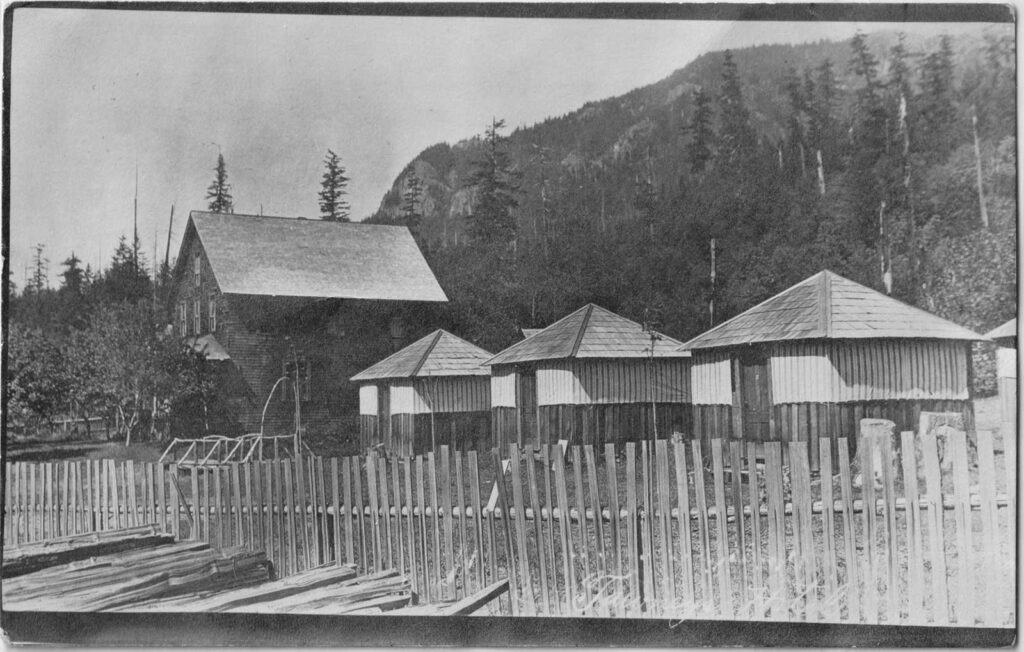
Keeping the hotel supplied with food could be challenging during busy times. There could be up to 150 people there to enjoy a Sunday dinner. In addition to the food that they supplied themselves some staples and canned goods were delivered once a week from Portland. There was also a butcher wagon who would make daily deliveries from Sandy to the hotels and cabin residents during the summer. He would arrive and open the doors to the insulated wagon to show different cuts of beef and lamb packed in ice.
The Tawney’s kept their own animals, including cows, pigs, and chickens. They had horses for guests to ride and a pair of donkeys for the children. Frequently Mr. Tawney would take a party of people on a wagon trip to Government Camp to pick huckleberries and have a picnic lunch.

They had a garden, an apple orchard and had berries for pies. They also used wild game and trout from the river and local creeks, sometimes supplied by the guests. The Salmon River was located nearby and provided lots of swimming and fishing. In 1910, B. Trenkman, C.J. Cook, and L. Therleson made a 1.5-hour trip up to Camp Creek for fishing. The three men came back with 286 trout. It was said to be one of the best meals at the Tawney Hotel.
Nell Howe, a longtime resident, remembered on summer days the most wonderful food. She said, “In the summertime the tables in the dining room were full for every meal and sometimes people were waiting their turn.” When guests looked back, they remember their fun summer memories of swimming in the river, fishing, helping with the chores, and enjoying the food.
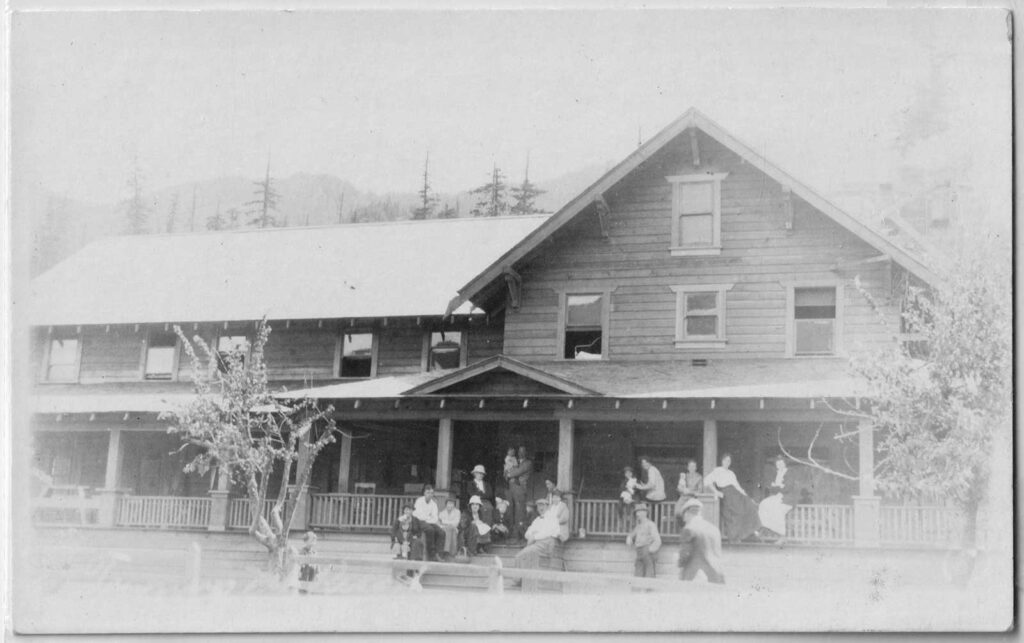
The hotel closed its doors in 1945, most likely due to the loss of business and the scarcity and cost of goods during World War II. The Tawney’s were in their later years by this time and the work involved in running a business like that was in their past. Mr. Tawney passed away in 1947 and soon after Mrs. Tawney moved to Portland with her daughter and son-in-law. She lived until 1959.
Sometime in the late 1950’s the old Tawney’s Mountain Home collapsed under the load of a heavy snowstorm. The property sold and the new owner demolished what was left of the old building leaving the two stone fireplaces as the only evidence of the good old days of Tawney’s Mountain Home and a significant part of the history of Welches Oregon.
